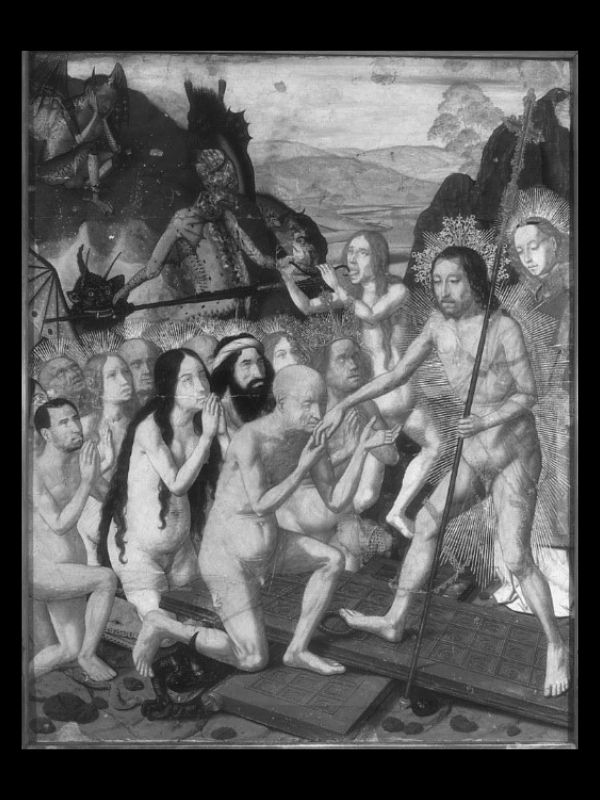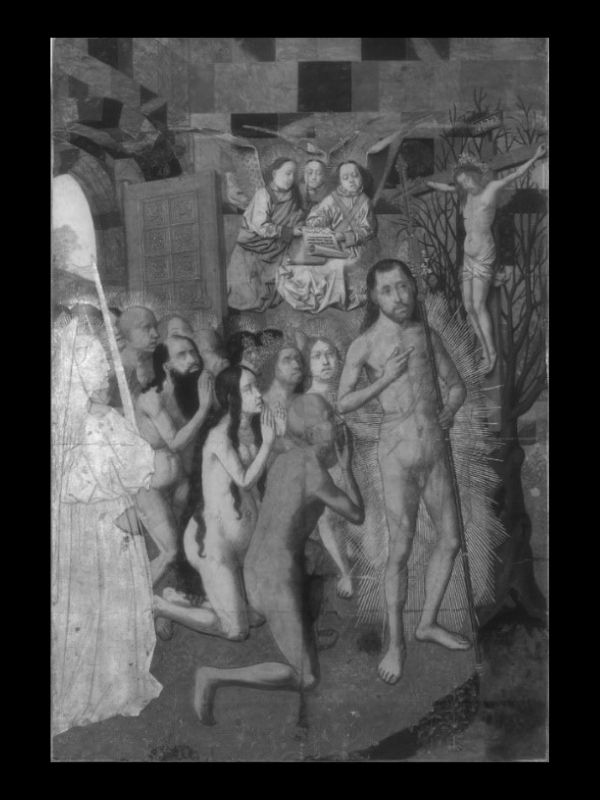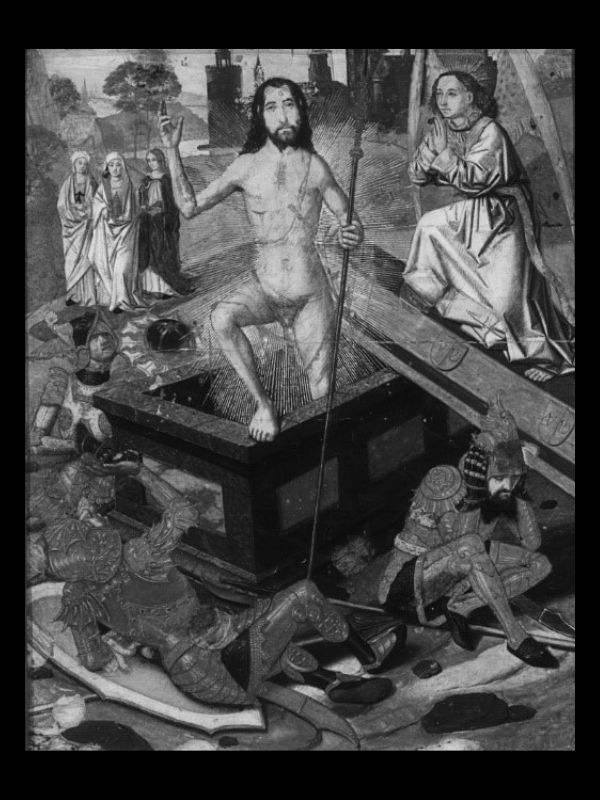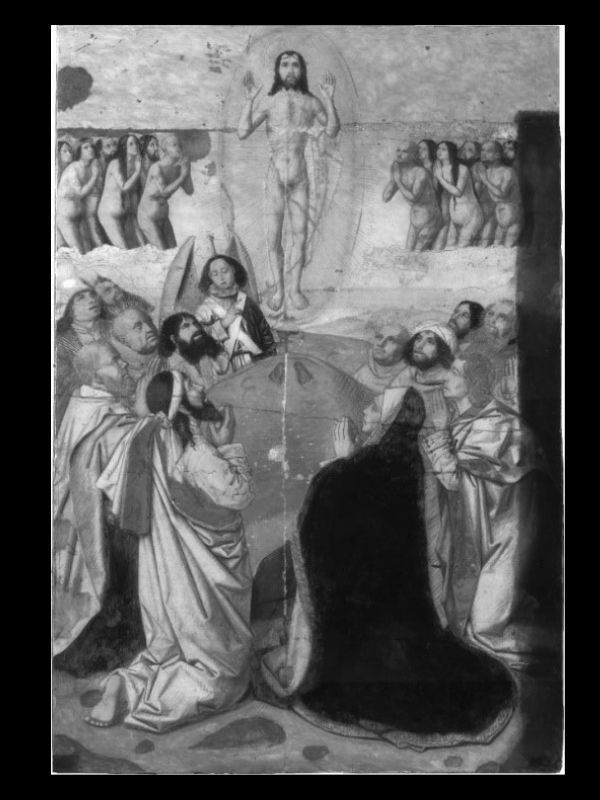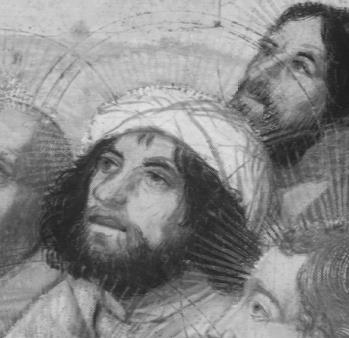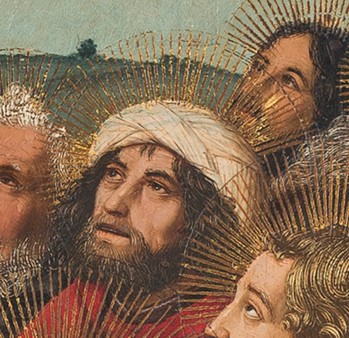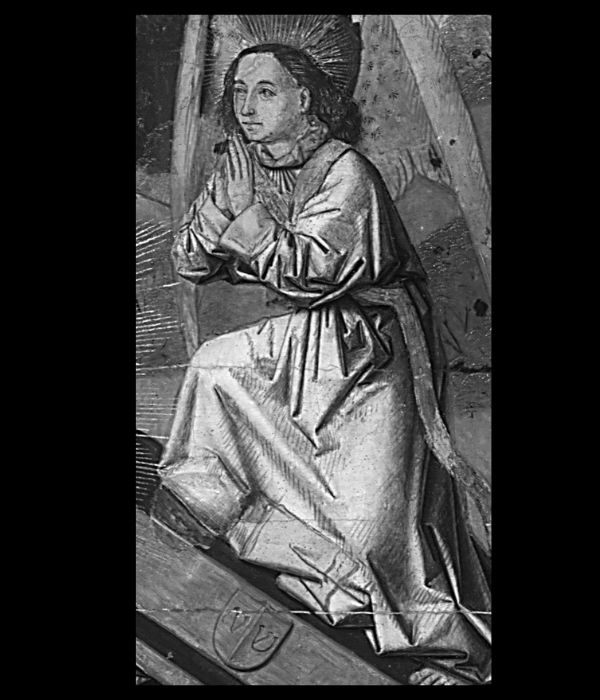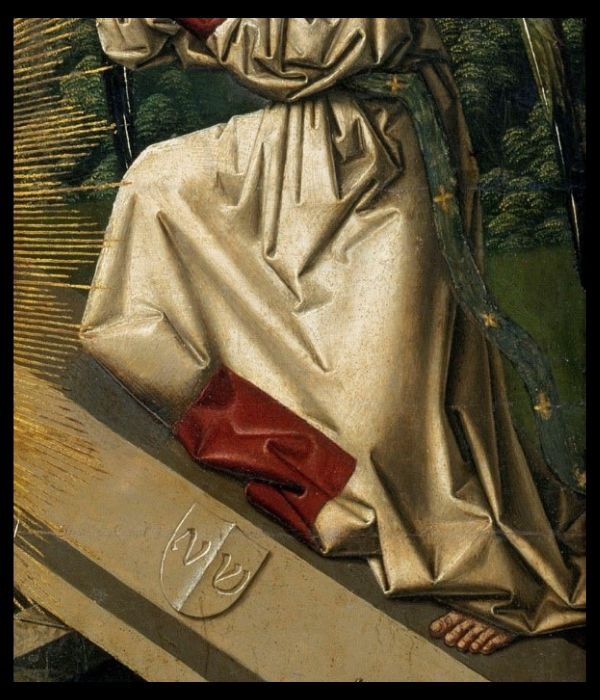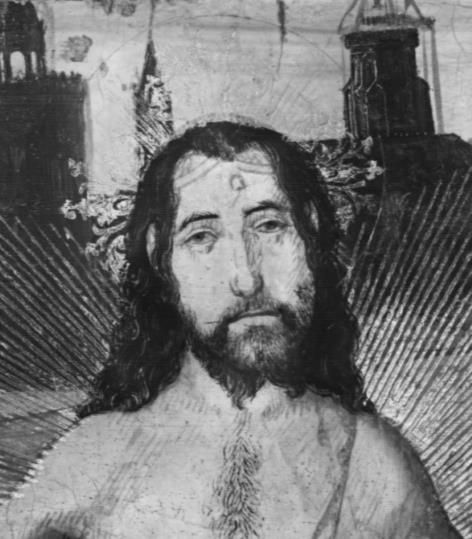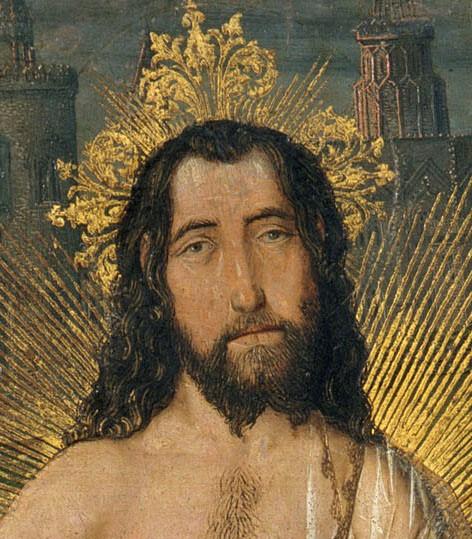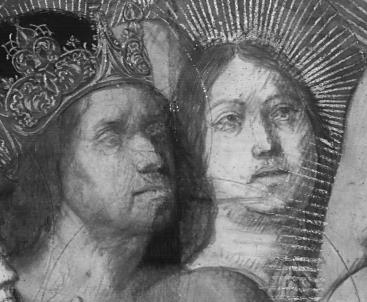Mireia Campuzano and Carme Ramells
The exhibition Bermejo: the 15th-Century Rebel Genius has for a few months allowed us to enjoy exceptional works by this Flemish influenced artist.
In this blog, however, we shall be placing the emphasis on studying the early stages of the creative process and we shall turn our gaze to what lies beneath the layers of colour. Our study reveals the drawings underlying some of the works in the exhibition. This is possible thanks to a technique of analysis – capturing images with infrared reflectography – that enables us to identify the line, the implements, and the initial sketch that the artist made before applying the colour.
Drawings revealed
The works that we have studied are the four panels in the group Christ the Redeemer –Descent of Christ into Limbo, Entry into Paradise and Vision of Christ Crucified, Resurrection, Ascension– and the magnificent Desplà Pietà from Barcelona Cathedral. Thanks to the artist’s painting technique, oil paint on wood applied in very thin layers over a drawing with carbon black, it has been possible to obtain good images captured by infrared radiation. Infrared reflectography
Infrared reflectography of Descent of Christ into Limbo and Entry into Paradise and Vision of Christ Crucified. RIR © Campuzano, Pedragosa, Ramells
Infrared reflectography of Resurrection and Ascension. RIR © Campuzano, Pedragosa, Ramells
Observing the images in detail we see that, before painting, Bermejo traced the drawing with a carbon black-based fluid and in this way the composition stood out on the layer of white preparation. He drew freehand and used the paintbrush. He also made use of incision and technical drawing instruments. With the paintbrush he drew the outlines of the figures, the landscape and the buildings, and with incision he created the circles of the haloes and drew straight lines.
Ascension, reflectogram and detail with difused light. RIR © Campuzano, Pedragosa, Ramells

Descent of Christ into Limbo, reflectogram. RIR © Campuzano, Pedragosa, Ramells 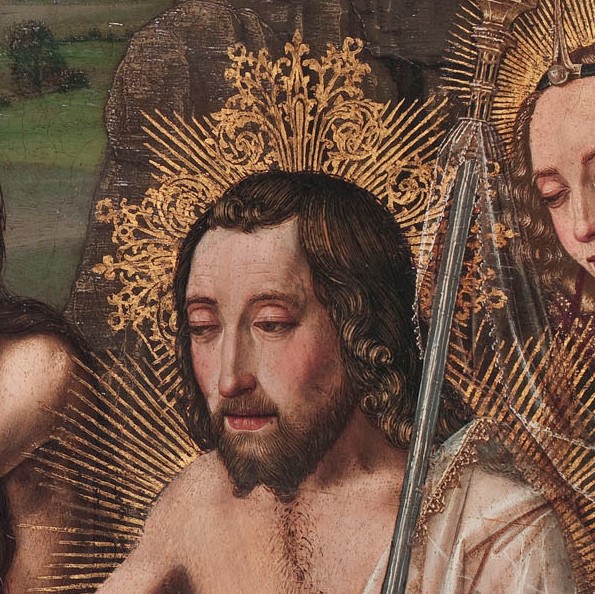
Descent of Christ into Limbo, detail with difused light. © RIR © Campuzano, Pedragosa, Ramells
The infrared images also show us how, at the drawing stage, the artist was already working on the light and shade; he achieved the effect of volume with oblique lines that suggest shading (hatching).
Resurrection, reflectogram and detail with difused light. RIR © Campuzano, Pedragosa, Ramells
One of the key aspects that reflectograms (IR) show us is how the artist changes his mind as he works. In the case of Bermejo this change may be small, a good example of this being the drawing of the ribbon on Christ’s forehead that disappeared at the painting stage. But it may also be a significant one, such as the change in the direction of the gazes of various figures, which surprisingly persists in different works.
Resurrection, reflectogram and detail with difused light. RIR © Campuzano, Pedragosa, Ramells
Entry into Paradise and Vision of Christ Crucified, reflectogram and detail with difused light. RIR © Campuzano, Pedragosa, Ramells
A drawing to be seen
If there is one case in which reflectography has presented us with a magnificent image, it is unquestionably in the Desplà Pietà. The underlying drawing that appears in it is so rich and complex that it invites us to look at it not as a plan due to be modelled at the colour stage but as a final work in which everything that is essential is represented. In this, the last painting in his career, the line is more delicate, the volumes of the bodies and the clothing are more elaborate and the compositional changes are detailed and very subtle. Here Bermejo introduces the complicated genre of portraiture. It is however surprising that he depicts Archdeacon Desplà with no correction of any kind, whereby we believe that before doing the drawing on the panel the master must have practised it on sheets of paper or parchment that we now think are lost.
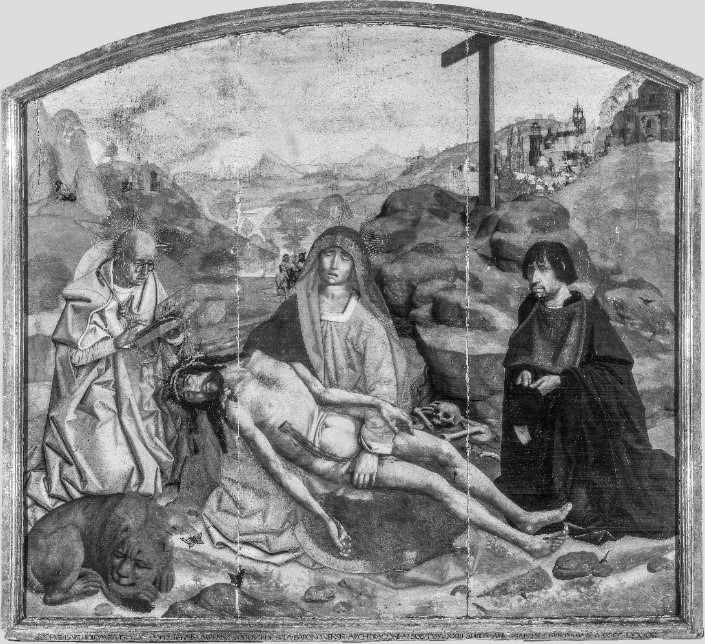
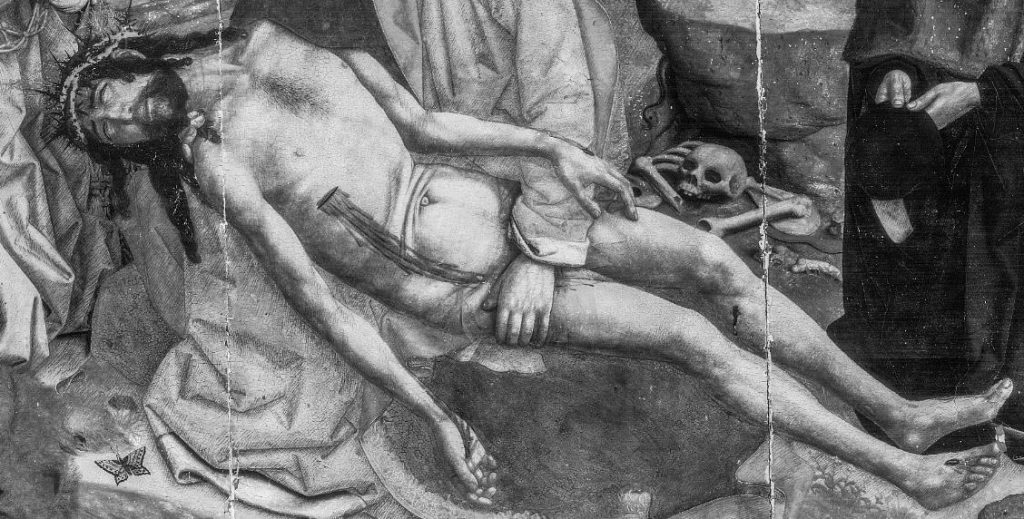
It may well be, who knows, that instead of being a preparatory sketch made by the artist before painting, the drawing of the Pietà, so finished and definitive, was in fact submitted to the commissioner Desplà for his approval.
“And thus you will achieve a drawing so beautiful that everybody will be captivated by your skill” (Cennini)
From 12 June, the works can be seen in the exhibition Bartolomé Bermejo: Master of the Spanish Renaissance, at The National Gallery.
Related links
Bermejo: the 15th-Century Rebel Genius
Bartolomé Bermejo. Museo del Prado
Bartolomé Bermejo: master of the Spanish Renaissance

